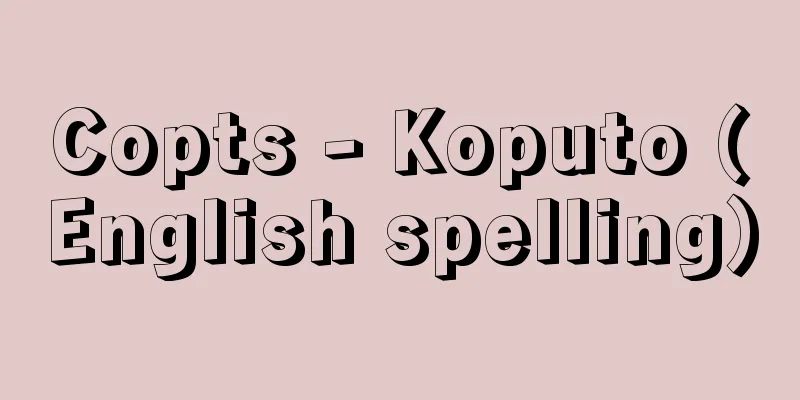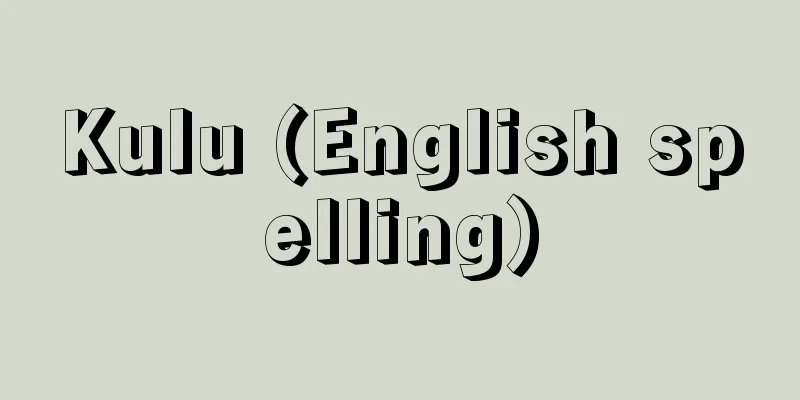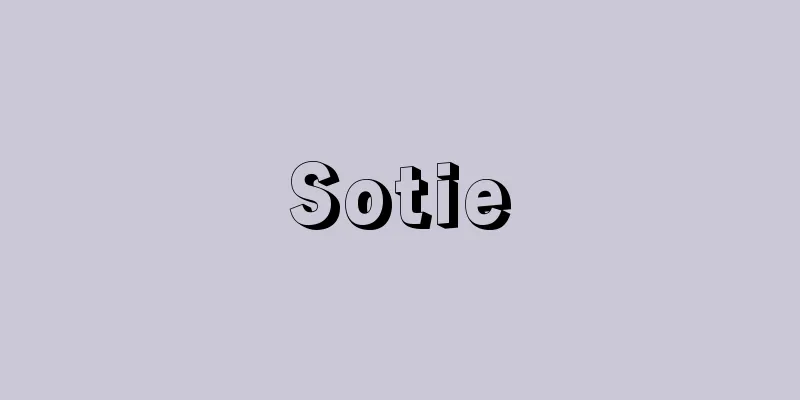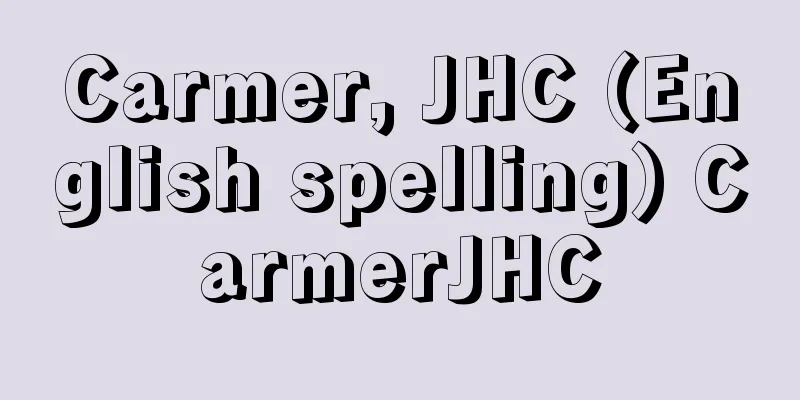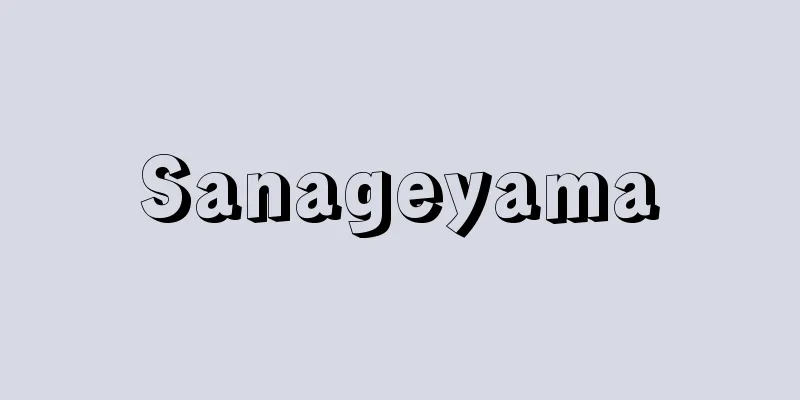Hisashi Inoue - Hisashi Inoue

|
A TV writer, a playwright, and a novelist. His real name was Hisashi. He was born in Komatsu-cho, Higashiokitama-gun, Yamagata Prefecture (now Kawanishi-cho). His father was a pharmacist and a regular winner of the Sunday Mainichi popular literary contest, but died when he was five years old. He moved with his mother, a hairdresser, to Ichinoseki, Iwate Prefecture, and then to Sendai. Later, when he was a junior high school student, Inoue entered the Catholic orphanage "Hikarigaoka Tenshien" on the outskirts of Sendai, where he became passionate about movies. He was baptized as a Catholic while attending Sendai Daiichi High School, and in 1953 (Showa 28) he enrolled in the German literature department of Sophia University, but later switched to the French literature department. He worked part-time as a host and member of the literary club at a strip theater in Asakusa, and developed a strong interest in Asakusa comedy and sketches, and began to actively write plays and screenplays. In 1958, he won the Arts Festival Script Encouragement Award for his debut play, Uka Uka Thirty, Choro Choro Forty. He was recognized as a broadcasting writer. After graduating from university, he continued to write scripts while working as a warehouseman, and co-wrote the script for the puppet show Hyokkori Hyoutanjima (1964) on NHK General TV with Yamamoto Morihisa (1934-1978). The modern, light-hearted humor of the show was widely supported by audiences nationwide. His subsequent work Nihonjin no Navel (1964), performed by the theater company Theatre Echo, was also well received, and he was praised as a genius in the new theater world. He also published his first full-length novel, Bun and Fun, and wrote the script for the NHK TV puppet series The Eleven of Nekojara City. At the same time, he published the musical comedies Omote Ura Gennai Frog Battle and Dogen's Adventure (both in 1970), for which he won the Kishida Drama Award. He also published the humorous novel Mocking Pot Master's After-Clearance (1971), followed by the novel Tegusari Shinju (1972), which depicted Edo period comedians in comic form, for which he won the 67th Naoki Prize. He also published the plays Strange Translation of the Bible and Tenpo 12 Year's Shakespeare (both in 1973), which pioneered new ground in satire and comedy, and the full-length novel Aoba Shigeru (1973). In 1976, he served as a visiting professor at a university in Australia, and after returning to Japan, he published plays such as "Comedians" (1977), "Real Japan: General Nogi" (1979), and "Kobayashi Issa" (1980), as well as novels such as "The Biography of the Writers" (1979) and "The Eggs on the Clogs" (1980), which were well received, but the completion of his subsequent full-length novel "Kirikirijin" (1982, Japan Science Fiction Award, Yomiuri Literature Award) attracted much attention. The opening story, about a third-rate writer who gets caught up in the independence struggle of the Kirikiri Republic that has appeared in a remote village in the Tohoku region, is full of Inoue's first-rate humor, but the critical spirit contained in the black humor, which claims that the Kirikiri Republic is an anti-state against the real Japan, attracted attention. The collection of essays written around the same time, "Private Edition Japanese Grammar" (1981), is a criticism of centralized Japan with the same motif. He continued to be active in writing plays and novels after that. His plays include "Headache, Stiff Shoulders: Higuchi Ichiyo" (1984), "Sparkling Constellations" (1985), "Ningen Gokaku" (1990), "Kamiyacho Sakura Hotel - Newest Plays" (2001), and "Inoue Hisashi Complete Plays" Volumes 1-5 (1984-1995). His novels include "Fuchushingura" (1985), "The Man with Forty Million Steps" (1990), "The Hundred Years' War" (1994), and "Tokyo Seven Roses" (1999). His other critical essays include "Inoue Hisashi's Rice Lectures" (1989), "The Fate of Books" (1997), "Inoue Hisashi's Agriculture Lectures" (1997), "The New Japanese Communist Party Manifesto" (1999, co-authored with Fuwa Tetsuzo), and "Nihongo Observation Notes" (2002), and his activities cover a wide range of fields. In 1987, he donated his collection of about 70,000 books (later increasing to 130,000) to his hometown of Kawanishi-cho, Yamagata Prefecture, and the Chihitsudo Library was opened there. In 1994, Kawanishi-cho Friendly Plaza was opened, combining the Chihitsudo Library with a theater hall and a town library. In 1988, the library became the base for the Life University Agriculture Course. He served as president of the Japan Playwrights Association and the Japan Pen Club, among other positions. He was awarded the Person of Cultural Merit in 2004. He passed away in 2010. [Tsuruo Matsumoto] "Shakespeare in the 12th Year of Tenpo" (1973, Shinchosha)" ▽ "The Complete Plays of Hisashi Inoue, 5 volumes (1984-1994, Shinchosha)" ▽ "Passing the Human Pass" (1990, Shueisha) ▽ "Inoue Hisashi's Agricultural Lectures" (1997, Ie no Hikari Kyokai) ▽ "Inoue Hisashi Junior Literature Museum, Vols. 1-11 (1999, Shiobunsha)" ▽ "The New Japanese Communist Party Manifesto, by Fuwa Tetsuzo and Inoue Hisashi (1999, Kobunsha)" ▽ "Kamiyacho Sakura Hotel - Latest Plays" (2001, Shogakukan) ▽ "The Crack in a Dream" (2001, Shogakukan) ▽ "Japanese Language Observation Notes" (2002, Chuokoron-Shinsha) ▽ "The Mockingpot Master's Aftermath", "Nine", "The Man of 40 Million Steps", all 5 volumes, "The Hundred Years' War", volumes 1 and 2 (Kodansha Bunko)" ▽ "Bun and Fun", "The Two Sides of Gennai's Frog War", "The Adventures of Dogen", "A Rare Translation of the Bible", "Eggs on Clogs", "Private Edition of Japanese Grammar", "Kirikiri People", volumes 1, 2 and 3, "Reminiscent Japan: General Nogi", "The Story of Rice" (Shincho Bunko)" ▽ "The Double Suicide in Chains", "The Green Leaves Grow", "The Fate of Books", "The Seven Roses of Tokyo" (Bunshun Bunko)" ▽ "Biographies of Individual Playwrights", "Kobayashi Issa" (Chuko Bunko)" ▽ "The Ronin", "Headache and Stiff Shoulders of Higuchi Ichiyo", "The Sparkling Constellations" (Shueisha Bunko)" ▽ "Hyokkori Hyoutanjima", all 13 volumes of the first series (Chikuma Bunko)" ▽ "The Life of Hisashi Inoue" by Yoshimitsu Kirihara (2001, Hakusuisha) Source: Shogakukan Encyclopedia Nipponica About Encyclopedia Nipponica Information | Legend |
|
放送作家、劇作家、小説家。本名廈(ひさし)。山形県東置賜(ひがしおきたま)郡小松町(現、川西町)に生まれる。父は薬剤師であり、また『サンデー毎日』の大衆文芸コンクールの常連入選者でもあったが、5歳のときに死亡。美容師の母と岩手県一関(いちのせき)、そして仙台に移住し、のちに井上は中学生のときに仙台郊外のカトリック系養護施設「光ヶ丘天使園」に入り、映画に熱中した。仙台第一高校生徒のころカトリックの洗礼を受け、1953年(昭和28)に上智(じょうち)大学ドイツ文学科に入学したが、のちにフランス文学科に転科した。浅草のストリップ劇場の進行係兼文芸部員のアルバイトを経験し、浅草喜劇やコントに強い興味を抱き、自分から戯曲やシナリオを積極的に書くようになる。 1958年処女戯曲『うかうか三十、ちょろちょろ四十』で芸術祭脚本奨励賞受賞。放送作家として認められた。大学卒業後も倉庫番をしながら台本を書き続け、NHK総合テレビでの連続人形劇『ひょっこりひょうたん島』(1964)の台本を山元護久(もりひさ)(1934―1978)と共作し、その現代的で軽快な笑いが全国の視聴者に広く支持された。続いて劇団テアトル・エコーが演じた『日本人のへそ』(1964)も好評で、新劇界の鬼才と評された。また長編小説『ブンとフン』を処女出版し、NHKテレビの連続人形劇『ネコジャラ市の十一人』の台本を書き、同時にミュージカル喜劇『表裏源内蛙合戦(おもてうらげんないかえるがっせん)』や『道元(どうげん)の冒険』(いずれも1970)を次々に発表し、この2作で岸田戯曲賞を受賞。またユーモア小説『モッキンポット師の後始末』(1971)に続いて、江戸時代の戯作者たちをコミックに描いた小説『手鎖(てぐさり)心中』(1972)が評価されて第67回直木賞を受賞する。さらに新しい風刺と笑いの境地を開拓した戯曲『珍訳聖書』『天保十二年のシェイクスピア』(ともに1973)、長編小説『青葉繁(しげ)れる』(1973)などを発表。1976年にオーストラリアの大学で客員教授を務め、帰国後発表した戯曲『喜劇役者たち』(1977)、『しみじみ日本・乃木大将』(1979)、『小林一茶(いっさ)』(1980)や小説『戯作(げさく)者銘々伝』(1979)、『下駄(げた)の上の卵』(1980)なども好評だったが、それに続いた長編小説『吉里吉里(きりきり)人』(1982。日本SF大賞、読売文学賞)の完成は話題をよんだ。東北の一寒村に出現した吉里吉里共和国の独立騒動に三流作家が巻き込まれるという書き出しは井上一流のユーモアにあふれているが、吉里吉里共和国は現実の日本に対する反国家であるというブラックユーモアに含まれた批評精神が注目された。同じころ書かれたエッセイ集『私家版日本語文法』(1981)も同じモチーフによる中央集権的な日本に対する批判である。 その後も、戯曲、小説などで活発に活動を続けた。戯曲では、『頭痛肩こり樋口一葉(ひぐちいちよう)』(1984)、『きらめく星座』(1985)、『人間合格』(1990)、『紙屋町さくらホテル――最新戯曲集』(2001)や『井上ひさし全芝居』1~5巻(1984~1995)などをまとめる。小説に『不忠臣蔵』(1985)、『四千万歩の男』(1990)、『百年戦争』(1994)、『東京セブンローズ』(1999)などがある。そのほか評論等に『井上ひさしのコメ講座』(1989)、『本の運命』(1997)、『井上ひさしの農業講座』(1997)、『新・日本共産党宣言』(1999、不破哲三と共著)、『にほん語観察ノート』(2002)などがあり、活動領域は多分野に及ぶ。 なお、1987年(昭和62)には、彼の郷里である山形県川西町に約7万冊の蔵書を寄贈し(その後13万冊に増加)、図書館「遅筆堂文庫」が開館された。1994年(平成6)には、この「遅筆堂文庫」と演劇ホール、町立の図書館が一体となった川西町フレンドリープラザがオープンした。この文庫を拠点に1988年からは、「生活者大学校・農業講座」が開講されている。日本劇作家協会会長、日本ペンクラブ会長などを務めた。2004年文化功労者。平成22年死去。 [松本鶴雄] 『『天保十二年のシェイクスピア』(1973・新潮社)』▽『『井上ひさし全芝居』全5冊(1984~1994・新潮社)』▽『『人間合格』(1990・集英社)』▽『『井上ひさしの農業講座』(1997・家の光協会)』▽『『井上ひさしジュニア文学館』1~11(1999・汐文社)』▽『不破哲三・井上ひさし著『新・日本共産党宣言』(1999・光文社)』▽『『紙屋町さくらホテル――最新戯曲集』(2001・小学館)』▽『『夢の裂け目』(2001・小学館)』▽『『にほん語観察ノート』(2002・中央公論新社)』▽『『モッキンポット師の後始末』『ナイン』『四千万歩の男』全5巻『百年戦争』上下(講談社文庫)』▽『『ブンとフン』『表裏源内蛙合戦』『道元の冒険』『珍訳聖書』『下駄の上の卵』『私家版日本語文法』『吉里吉里人』上中下『しみじみ日本・乃木大将』『コメの話』(新潮文庫)』▽『『手鎖心中』『青葉繁れる』『本の運命』『東京セブンローズ』(文春文庫)』▽『『戯作者銘々伝』『小林一茶』(中公文庫)』▽『『不忠臣蔵』『頭痛肩こり樋口一葉』『きらめく星座』(集英社文庫)』▽『『ひょっこりひょうたん島』第1期全13巻(ちくま文庫)』▽『桐原良光著『井上ひさし伝』(2001・白水社)』 出典 小学館 日本大百科全書(ニッポニカ)日本大百科全書(ニッポニカ)について 情報 | 凡例 |
Recommend
Narcissus tazzeta (English spelling)
…[Hiroshi Aramata]. … *Some of the terminology th...
City League - Städtebund; city league
Although it can also be seen in ancient Greece and...
Warm sake bottle - Kandokuri
〘 noun 〙 A tokkuri used to warm sake. Kantsubo (wa...
Thespis - Tespis (English spelling)
He is said to have been active in ancient Greece ...
Potemkin, Grigorii Aleksandrovich
Born: September 24, 1739, Chijobo [Died] October 1...
Chuikov, VI (English spelling)
…The besieged Leningrad endured the winter, suffe...
Adiantum capillus-veneris (English name) Adiantum capillus veneris
…[Shigeyuki Mitsuda]. … *Some of the terminology ...
Utsugi ruins
Located in Utsugi Mukaihara, Hachioji, Tokyo, this...
Biogeography
A field that studies the geographical distributio...
Mingo Nisso - Mingo Nisso
(Also called "Mingojisso") A commentary ...
《Skinned Dog》 - A dog wearing a coat
…Already in his collection of poems, The Orators ...
English Snobs - English Snobs
…The origin of the word is unclear, but it was or...
Please refrain from meeting me
…In addition, when a samurai's close relative...
Aruri - Aruri
…The oldest carvings, of elephants and hippos, ar...
Kahadacha - Fragrant Skin Tea
...Blessed with favorable soil and climate, the a...


